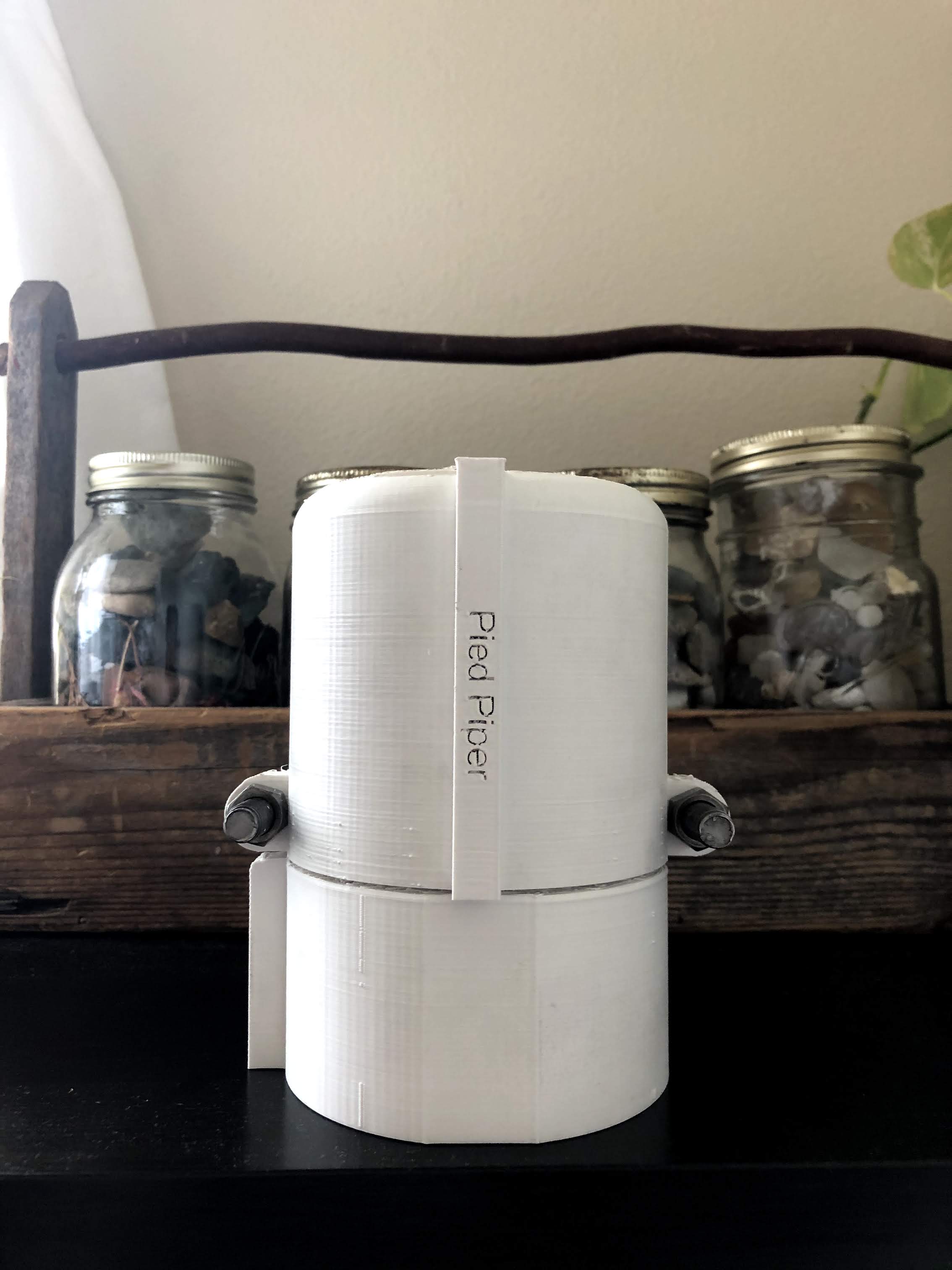-
Notifications
You must be signed in to change notification settings - Fork 3
Pied Piper
Project Leads: Elijah Shumway [email protected]

The Pied Piper is a microcontroller based system that analyzes incoming vibration signals for the presence of insects on vines, and then plays back a matching mating call to lure the bugs into a trap.
The system consists of a feather m4 express, a contact microphone, and a 30mm Dayton audio exciter. The PiedPiper "listens" to vibrations along the vine upon which the microphone is attached to, and then passes the resulting signal through a detection algorithm. If the algorithm determines that an insect is present, the audio exciter is activated and the matching female mating call is played back at the entrance to a trap. Additionally, at time of detection the incoming signal is sampled and recorded at 37.5kHz.
State Machine Diagram of Pied Piper

- Effectively recognize when an insect is present
- Successfully attract insect into trap
- Determine the time frame of the highest activity for the insects
- 90% accuracy for insect detection within distances of 1 meter
- 1mm/s peak for audio playback in substrate at a distance of 1 meter
- Successfully attract 90% of insects located on or near substrate
The PCB for the Pied Piper consists of a Feather m4 express for controlling the board, an Adafruit Audio FX board for controlling playback of mating calls, an SSM2166S Preamp and compressor for adjusting the incoming signal, and a MAX9744 20W amplifier for amplifying the output for the vibration motor. The SSM2166S is controlled by 4 potentiometers that adjust the values of gain, compression, noise floor, and rotation point. Tweaking these resistor values allows the user to adjust these levels, conditioning the incoming audio signal into an optimal form for the detection algorithm. The current resistor values are as follows:
- Gain: 618 Ohms
- Compression: 10.44 kOhms
- Rotation Point: 28 kOhms
- Noise Floor: 948 kOhms
This set up limits the incoming signal to a max Vrms of .1 volt, and a minimum of <250 uVrms. The signal is compressed at a 2:1 ratio at unity gain. These levels allow for sensitive readings of the vibrations of the insects while filtering out other sounds present on the substrate.
Pied Piper PCB

Pied Piper Schematic

Pied Piper Board




Pied Piper Trap
 Interior of Trap
Interior of Trap

The Pied Piper is currently able to distinctly recognize a specific insect's mating call from other variations of insect mating calls. The system is 86.67% accurate at recognizing an insect's mating call at distances of 25 cm away from the source. Upon recognition, the system plays back the resulting insect call through a vibration motor into the substrate.
As development continues on, the sensitivity and accuracy of the PiedPiper will be improved upon to reach a 90% detection rate at distances of up to one meter. The overall power consumption of the board will also be improved to lengthen the battery life in the field. The Pied Piper has currently entered its testing phase and two prototypes will be developed and tested extensively to determine accuracy and effectiveness.
- R. W. Mankin, D. K. Weaver, M. Grieshop, B. Larson, and W. L. Morrill, “Acoustic System for Insect Detection in Plant Stems: Comparisons of Cephus cinctus in Wheat and Metamasius callizona in Bromeliads1,2,” vol. 21, no. 4, p. 11, 2004.
- Project Planning
- Prototyping
- Synthesis
- Lab Testing
- Field Testing
- Finalization/Production
- Poster/Presentation
- Publication
- CRES
- Dendrometer
- Djinn
- eDNA Sampler
- eGreenhouse
- Evaporometer
- FloDar
- HyperRail
- Hypnos
- Isotopic Sampler
- Lilypad
- Loom
- Micro-Aggregating Sewer Sampler
- Mooraca
- OPEnSampler
- Pied Piper
- Rag Guard
- Rain Gauge Calibrator
- RainSavor
- RFID Moisture
- Sap Flow Meter
- SitkaNet
- Slide Sentinel
- Smart Rock
- Spool
- WeatherChimes
- Weed Warden
- Wisp
- Archived Project Blogs